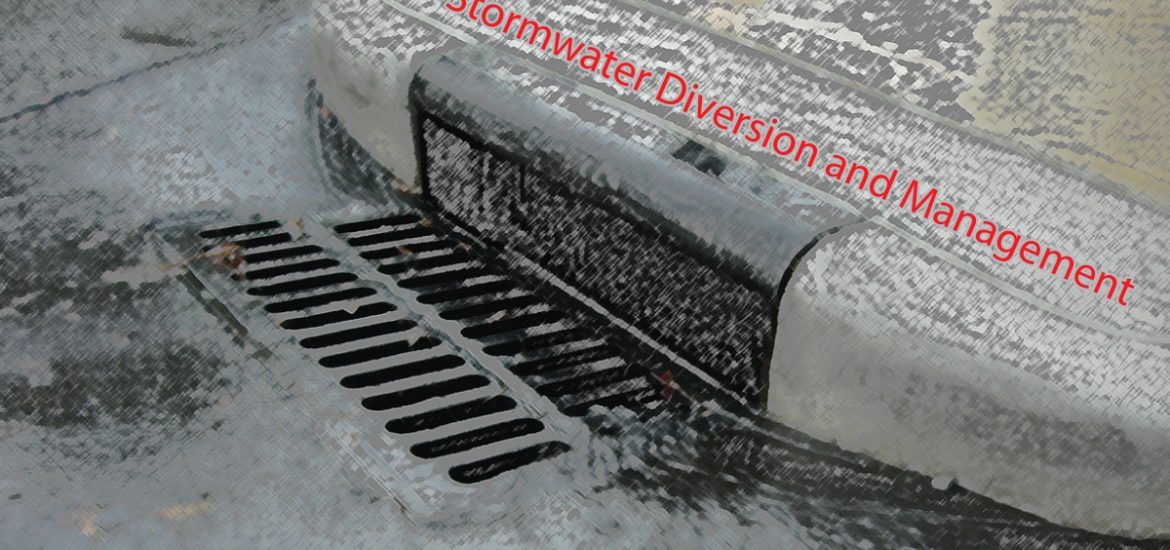Essential Question:
How might you manage stormwater runoff?
- How might you reduce stormwater runoff from driveways/parking lots or rooftops?
Overview:
Students will follow a Fermi Problem process to investigate stormwater diversion and management. Students will investigate the following research questions:
- How much water falls on our campus each year?
- How much water goes into storm drains on our campus?
- How much water could potentially be diverted on our campus?
Students work in groups to:
- Estimate amounts that answer the research questions
- Brainstorm what information is needed to solve the problem
- Research online to gather information
- Collect data from certain parts of campus
- Research possible solutions
- Develop a plan to manage stormwater run-off
- Present plan to the class.
Day 1: Introduction and Pre-Test (Stormwater Lesson 1 outline)
Warm-Up: Stormwater Pre_Post Assessment
Watch videos on effects of run off in storm drains; where does run off go
- Establish purpose:
- To understand what stormwater runoff is, its effects, and ways to reduce it
- Graphic organizer:
Complex reading with annotation
- Purpose:
- To understand what stormwater runoff is, its effects, and ways to reduce it
- Annotation: http://www.cwp.org/2013-04-05-16-15-03/stormwater-management
- Circle the information that might help you manage stormwater runoff
- Underline definitions and effects of stormwater
- Put a “?” next to things that are confusing, that you disagree with, or that you question the validity of.
- Annotate first two paragraphs together. Continue to revisit purpose as we annotate, looking for definition, effects, and management
- Summarize reading by adding to graphic organizer
Make a prediction (no calculators, no research)
- Fermi Problem Explanations? https://www.youtube.com/watch?v=eY-7cIFqg_s
(Option available on Google Forms)
- How much water falls on our campus each year?
- How much water goes into storm drains on our campus?
- How much water could potentially be diverted on our campus?
Day 2: Brainstorming (Storm water Lesson 2 outline)
Warm Up: Share notes from reading and discuss article (whiparound)
Research and pose question:
- How might you manage stormwater runoff?
- How might you reduce stormwater runoff from driveways/parking lots or rooftops?
Brainstorm Solutions:
- Provide Post-its: All students write ideas, regardless of feasibility and whether correct or incorrect. Put on central white-board/large paper.
- Read and organize into subtopics on whiteboard/paper and label categoriesd
Brainstorm all the elements that will be going into this:
- Average total rainfall on campus (volume in cubic meters)
- Surface area of campus
- Surface area of driveways/paved regions
- Surface area of rooftops
Day 3: Research
Work day: Research Lab
- Research Questions (have handout): Gather one sentence of explaining process as a group before giving them access to chromebooks for data collection.
- How might one determine the volume of water that falls on campus?
- How might one determine the volume of water that falls on rooftops?
- How might one determine the volume of water that falls on driveways/parkinglots?
- Research annual rainfall:
- Eureka: 45 inches/year (≈ 1.00203 meters/year) from Eureka WFO Woodley Island National Weather Service
- Arcata: 39 inches/year (≈ 0.9906 meters/year) from Sperling’s Best Places (google response #1)
- Provide aerial map of campus
- Determine area of campus
- Choose units
- Show dissected figures and label on
- Determine the volume of water that would fall on this scale figure
- Determine areas of rooftops
- Choose units
- Show dissected figures and label on map
- Determine the volume of water that would fall on this scale figure
- Determine area of driveways/parking lots
- Choose units
- Show dissected figures and label on map
- Determine the volume of water that would fall on this scale figure
- Determine area of campus
- Find a figure to measure to create scale
- Determine the linear scale factor (1cm = 10.5m)
- Determine the actual surface area
- Determine the actual volume of water that falls on that area.
Day 4: Google Earth
- Lesson Overview: HISI_Lesson4_outline
- Google earth tutorial on chromebooks:
- Go to Google Maps and click on Earth View
- Zoom in to AHS
- Double click mouse pad and use “measure distance” to determine the area of composite figures.
- The closer you are zoomed in, the more accurate the figures.
Day 5: Solution Development
Reading:
- The 4 different elements of LID (focus on rooftops and driveways)
- Each Group Reads and Annotates as a group one article
- Circle Information that is useful
- Cross out extraneous info
- Write any questions you have as you read.
- Comment on sections with your thoughts: link to definition, benefits, drawbacks
- Shareout three aspects from your reading.
- Definition
- Benefits
- Drawbacks
- Post Test
Pre/Post Test: Stormwater Pre_Post Assessment
- Describe the process you would take to develop a stormwater management plan.
- Would it be more beneficial to decrease stormwater runoff from rooftops or driveways/parking lots? Why? Justify your response with specific data.

